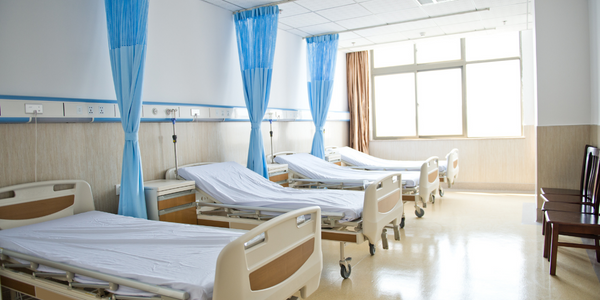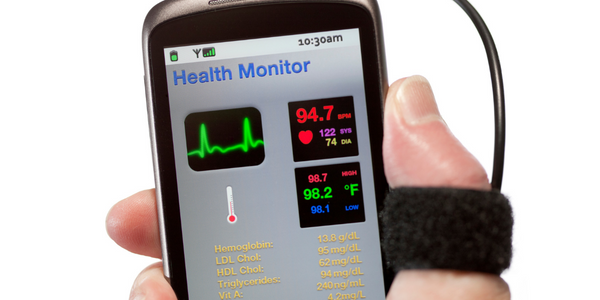The Hospital of Calais Enhances Security with WALLIX PAM4ALL for External Provider Access
公司规模
Large Corporate
地区
- Europe
国家
- France
产品
- WALLIX PAM4ALL
- WALLIX Access Manager
- WALLIX Bastion
- WALLIX Authenticator
技术栈
- Multi-factor Authentication
- Session Management
- Password Management
实施规模
- Enterprise-wide Deployment
影响指标
- Customer Satisfaction
- Productivity Improvements
技术
- 网络安全和隐私 - 身份认证管理
- 网络安全和隐私 - 安全合规
- 网络安全和隐私 - 应用安全
适用行业
- 医疗保健和医院
适用功能
- 设施管理
- 商业运营
用例
- 入侵检测系统
- 远程控制
服务
- 网络安全服务
- 系统集成
关于客户
The Dr. Jean Eric Techer Hospital of Calais is a prominent healthcare facility in the Calais region of France, known for its specialized medical care in areas such as surgery, obstetrics, and mental health. With 962 beds, 1,800 professionals, and 200 doctors, the hospital provides comprehensive medical services, including follow-up and support for the elderly. As a Level A certified institution by the French National Health Authority, the hospital is a key partner in the medical services of the Calais region and a model in specialized fields like stroke, cancer, gynecology, and maternity. It is part of the Opal Coast hospital grouping and collaborates with various healthcare players from the northwest coast of France.
挑战
The Hospital of Calais faced significant challenges in managing and securing access for numerous external service providers who required 24/7 access to the hospital's IT resources. The hospital's IT department struggled with tracking and recording the actions and interventions of both internal and external parties, which was compounded by recurring but untraceable incidents. The lack of detailed data made it difficult for IT teams to conduct thorough incident investigations. Additionally, managing access authorizations for privileged users and controlling external service providers' access through strong authentication were critical needs that the hospital needed to address.
解决方案
To address its security challenges, the Hospital of Calais implemented the WALLIX PAM4ALL suite, focusing on the WALLIX Access Manager and WALLIX Bastion modules. These solutions provided session management, password management, and multi-factor authentication capabilities. The deployment of these modules allowed the hospital to gain visibility into all actions performed by external providers, with the ability to audit user sessions through complete recording and metadata extraction. The access management functions of WALLIX PAM4ALL ensured rigorous control over privileged user rights, requiring IT team approval for access to sensitive applications. The solution also enabled the hospital to define fine-grained access rights and authorizations, allowing precise role assignments without needing passwords for target equipment. Additionally, the multi-factor authentication solution offered flexible two-factor authentication options, enhancing security further.
运营影响
数量效益

Case Study missing?
Start adding your own!
Register with your work email and create a new case study profile for your business.
相关案例.

Case Study
Hospital Inventory Management
The hospital supply chain team is responsible for ensuring that the right medical supplies are readily available to clinicians when and where needed, and to do so in the most efficient manner possible. However, many of the systems and processes in use at the cancer center for supply chain management were not best suited to support these goals. Barcoding technology, a commonly used method for inventory management of medical supplies, is labor intensive, time consuming, does not provide real-time visibility into inventory levels and can be prone to error. Consequently, the lack of accurate and real-time visibility into inventory levels across multiple supply rooms in multiple hospital facilities creates additional inefficiency in the system causing over-ordering, hoarding, and wasted supplies. Other sources of waste and cost were also identified as candidates for improvement. Existing systems and processes did not provide adequate security for high-cost inventory within the hospital, which was another driver of cost. A lack of visibility into expiration dates for supplies resulted in supplies being wasted due to past expiry dates. Storage of supplies was also a key consideration given the location of the cancer center’s facilities in a dense urban setting, where space is always at a premium. In order to address the challenges outlined above, the hospital sought a solution that would provide real-time inventory information with high levels of accuracy, reduce the level of manual effort required and enable data driven decision making to ensure that the right supplies were readily available to clinicians in the right location at the right time.

Case Study
Gas Pipeline Monitoring System for Hospitals
This system integrator focuses on providing centralized gas pipeline monitoring systems for hospitals. The service they provide makes it possible for hospitals to reduce both maintenance and labor costs. Since hospitals may not have an existing network suitable for this type of system, GPRS communication provides an easy and ready-to-use solution for remote, distributed monitoring systems System Requirements - GPRS communication - Seamless connection with SCADA software - Simple, front-end control capability - Expandable I/O channels - Combine AI, DI, and DO channels

Case Study
Driving Digital Transformations for Vitro Diagnostic Medical Devices
Diagnostic devices play a vital role in helping to improve healthcare delivery. In fact, an estimated 60 percent of the world’s medical decisions are made with support from in vitrodiagnostics (IVD) solutions, such as those provided by Roche Diagnostics, an industry leader. As the demand for medical diagnostic services grows rapidly in hospitals and clinics across China, so does the market for IVD solutions. In addition, the typically high cost of these diagnostic devices means that comprehensive post-sales services are needed. Wanteed to improve three portions of thr IVD:1. Remotely monitor and manage IVD devices as fixed assets.2. Optimizing device availability with predictive maintenance.3. Recommending the best IVD solution for a customer’s needs.

Case Study
HaemoCloud Global Blood Management System
1) Deliver a connected digital product system to protect and increase the differentiated value of Haemonetics blood and plasma solutions. 2) Improve patient outcomes by increasing the efficiency of blood supply flows. 3) Navigate and satisfy a complex web of global regulatory compliance requirements. 4) Reduce costly and labor-intensive maintenance procedures.

Case Study
Cloud-based healthcare solution for Royal Philips
Royal Philips wanted to launch its cloud-based healthcare solution HealthSuite Digital Platform in China to deliver services to help cope with challenges related to urbanization and population growth. Philips wanted to achieve this goal by combining mobile, cloud computing and big data technologies. To bring this platform and product to market, Philips required cloud computing and local technical service capabilities in China, in addition to a flexible IT infrastructure that could handle user requests.







